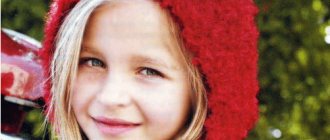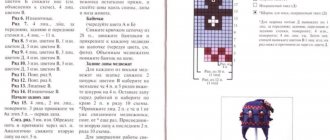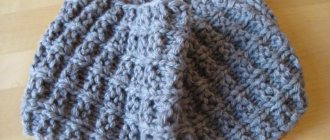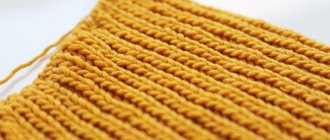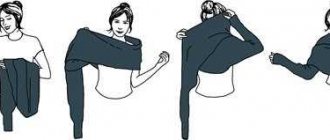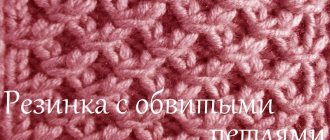History of the origin of the style
In cold Ireland and Scotland, where poor fishermen live, clothing was created by hand by women. The severity of the terrain and climate left a significant imprint on the formation of the style. It was here that a sweater was first created, which was called a fisherman's sweater.
According to ancient chronicles, the pattern was created on clothing in the form of a secret painting that could only be deciphered by members of one clan.
Fishing is a dangerous profession, especially in the old days. Many people who went to sea did not return, and the bodies washed ashore could only be identified by their clothes.
To arrange a worthy farewell, women knitters came up with special ornaments. Most symbols are passed down from generation to generation purely narratively. No manuscripts were found.
Unusual aran in the form of a twig with leaves
Aran in the form of a branch with leaves looks expressive in any product where large patterns are appropriate. A purl stitch is knitted on the sides of the pattern itself.
How to knit the pattern - video with diagram:
For the sample, 100 g of yarn was used. 240 meters; knitting needles 2.5 mm.
Knitting pattern in rotary rows:
Pattern repeat: 28 loops; 16 rows.
All even rows are knitted according to the pattern, taking into account crossed stitches. It is easier to knit with a purl loop - “grandmother’s”.
Row 1 (prep): purl 4; 6 persons; 5 p.; 1 sc. persons; 2 purl; 6 persons; 2 purl; 1 sc. persons; 1 purl. Row 2 (preparatory): knit 1; 1 sc. purl; 2 persons; 6 purl; 2 persons; 1 sc. purl; 5 persons; 6 purl; 4 persons
- ROW 1: purl 4; 6 crossed (3 persons. AT work +3 persons); 5 p.; 1 person hidden; 2 purl; 6 persons; 2 purl; 1 sc. persons; 1 purl.
- ROW 2: knit 1; 1 sc. purl; 2 persons; 6 purl; 2 persons; 1 sc. purl; 5 persons; 6 purl; 4 persons
- ROW 3: purl 2; 5 crossed (2 persons. AT work +3 persons); 3 persons; 4 purl; 4 crossed (1 purl + 3 / 1 purl; 1 hidden face; 1 purl / BEFORE work); 6 persons; 2 purl; 1 sc. persons; 1 purl.
- ROW 4: knit 1; 1 sc. purl; 2 persons; 6 purl; 1 person; 1 sc. purl; 6 persons; 8 purl; 2 persons
- ROW 5: P1; 4 crossed (1 person. AT work +3 persons); 5 persons; 3 purl; 1 person; 1 purl; 4 crossed (1 purl + 3 / 1 purl; 1 hidden face; 1 purl / BEFORE work); 5 persons; 4 p.
- ROW 6: knit 4; 5 p.; 1 person; 1 sc. purl; 3 persons; 1 purl; 3 persons; 9 purl; 1 person
- ROW 7: 4 crossed (1 purl. BEHIND work + 3 persons); 6 persons; 2 purl; 2 persons tilted to the RIGHT; 2 purl; 5 crossed (2 purl + 3 / 1 purl; 1 hidden face; 1 purl / BEFORE work); 3 persons; 4 p.
- ROW 8: knit 4; 3 purl; 1 person; 1 sc. purl; 5 persons; 2 purl; 2 persons; 6 purl; 1 person; 3 p.
- ROW 9: 3 crossed (1 purl. BEHIND work + 2 persons); 1 purl; 6 persons; 1 purl; 3 crossed (1 person. AT work +2 persons); 4 purl; 6 crossed (3 knits + 3 / 1 purl; 1 hidden knits; 1 purl / BEFORE work); 4 p.
- ROW 10: knit 5; 1 sc. purl; 1 person; 3 purl; 4 persons; 3 purl; 1 person; 6 purl; 2 persons; 2 p.
- ROW 11: 2 crossed (1 purl. BEHIND work + 1 person); 2 purl; 6 persons; 4 crossed (1 purl. BEHIND work +3 persons); 4 purl; 3 persons; 5 crossed (2 knits + 3 / 1 purl; 1 hidden knits; 1 purl / BEFORE work); 2 p.
- ROW 12: K3; 1 sc. purl; 1 person; 5 p.; 5 persons; 9 purl; 3 persons; 1 purl.
- ROW 13: purl 4; 5 persons; 4 crossed (1 purl. BEHIND work +3 persons); 2 purl; 1 sc. persons; 2 purl; 5 persons; 4 crossed (1 knit + 3 / 1 purl; 1 hidden knit; 1 purl / BEFORE work); 1 purl.
- ROW 14: K2; 1 sc. purl; 1 person; 6 purl; 2 persons; 1 sc. purl; 3 persons; 8 purl; 4 persons
- ROW 15: purl 4; 3 persons; 5 crossed (2 purl. BEHIND work +3 persons); 3 purl; 1 sc. persons; 2 purl; 6 persons; 4 crossed (1 purl + 3 / 1 purl; 1 sk.; 1 purl / BEFORE work).
- ROW 16: knit 1; 1 sc. purl; 2 persons; 6 purl; 2 persons; 1 sc. purl; 5 persons; 6 purl; 4 persons
The pattern is repeated from the 1st to the 16th row.
Creating simple patterns
The aran knitting pattern is not complicated if you use some common elements:
Scythe. To create a weave, knit and purl rows are used. Odd numbers are counted from the right side, even numbers from the left. The standard braid width is 12 loops. Repeat after row 8.
Patterned braid. It is created by the same analogy as the previous version. The standard width is 9 loops, and the repetition is carried out after the sixth row.
Celtic rhombus. Knitting a sweater with arans of this form is more difficult than the previous ones. The width of the pattern is 36 loops. Repeat after 38 rows. When finished, the ornament looks very beautiful.
Description of work.
You can knit a hat not only on circular knitting needles, but also on stockinette knitting needles. Here everyone uses their own alternative, more convenient option. The pattern repeat is 32 rows high and 20 stitches wide. In one row the pattern repeat will be repeated 6 times.
So, we knit this model of a hat, it is the only one of its kind, the author’s, as a gift to you, this master class is published for the first time on the page of the “Irena Handmade” website! We calculate the number of loops for the hat. For me it is 96 loops plus 1 for closing in a circle.
1 cm - 2 loops;
OG=57 cm;
57×2=114 loops;
Subtract 15% necessary to account for the stretching of the headgear.
114-15% = 96 loops.
I perform the set in the usual way, it is important that when joining in a circle, the set row does not twist.
Be sure to mark the beginning of the row with a marker.
To get a similar cast-on edge of the product, we knit four rows according to pattern No. 1, hollow elastic (rows 1-4 of the pattern).
- 1-4 row. Scheme No. 1 hollow elastic band.
In the 5th row we make the transition to a 2x2 elastic band according to the fifth row of the same pattern.
- 5 row. Scheme No. 1 hollow elastic band.
- 6-18 row. Pattern No. 2 elastic band 2×2 (13 rows).
Height is 6 cm.
We place markers. We recalculate the stitches for the additions necessary to work with the aran pattern. Repeat the pattern in width 6 times. To knit the lapel we cast on 96 stitches.
96:6=16 loops in rapport.
In pattern No. 4 of the main pattern, the repeat is equal to 20 loops. Therefore, in each it is necessary to add 4 loops according to the pattern No. 3 of the increase when moving to the main pattern (second row of the pattern).
- Row 19 Scheme No. 3. Additions when switching to the main pattern.
There are 120 loops in the work. Next, we knit in height with the main “Blueberry” pattern according to pattern No. 4 (row 1-32 of the pattern).
- 20-51 row. Pattern No. 4. Aran pattern “Blueberry” (32 rows).
The height of the product including the elastic is 18 cm.
We begin to work with the crown of the product according to scheme No. 5 of decreasing at the crown of the hat.
- 52-75 row. Decrease pattern No. 5 at the top of the hat (24 rows).
There will be 4 loops left in each repeat. Total 24.
Cut the thread, use a hook or needle to pull it through the remaining loops, pull them together and fasten them well.
Important:
- leave the thread for fastening as long as possible;
- Pull it through the remaining loops twice.
The total height of this cap is 26 cm.
Then I made the pom pom.
To do this, I used a mold with a diameter of 9 cm of a special device Gamma PM-4. A detailed master class on this topic is available on the Irena Handmade website. It’s called “How to make a pompom from threads.”
After familiarizing yourself with it, you can easily make the same pompom, and maybe even better!
Openwork patterns
Unlike knitting arans on a bias, the openwork version is much more difficult to perform. However, such patterns add a truly fabulous style to sweaters and scarves.
Experienced knitters prefer openwork weaves, as they are more interesting to perform.
The most popular options are:
- openwork braids;
- openwork diamonds;
- eastern braids.
It is possible to make such a drawing qualitatively only according to the diagram.
Making a Sweater
Arana braid knitting is often used to create men's and women's sweaters, pullovers, and vests. For many years, these patterns have encouraged needlewomen to create similar products for their families.
An unusual weave on a jumper lifts your spirits in bad weather and surprises passers-by. Sweaters like these never go out of style. Therefore, learning how to make such clothes yourself is necessary if knitting is your passion.
Irish knitting is considered one of the most beautiful solutions. The sketch for the pattern describes the creation of a repeat consisting of 24 loops and 2 edge loops.
Purl rows must be performed strictly according to the sketch. The repeat is repeated after every 16 rows.
NOTE!
- History of women's dresses.
- Lego constructors. Story.
- What should you pay attention to when choosing a toy for your child?
Autumn braids created on sweaters can not only brighten up the dull rainy weather for the people around them, but also for the owner himself. Videos of aran knitting in this style are replete with almost every handicraft website. The pattern repeat is 22 loops wide and repeated after 40 rows. Without a correctly drawn up sketch, it is problematic to complete the work.
You can improve your New Year's mood with hand-knitted jumpers for the whole family. For this occasion, a modern pattern is used that resembles a herringbone. To complete this style of knitting, it is recommended to get an exact pattern.
Knitting arans with knitting needles: patterns with descriptions
The Celtic pattern that we want to knit is formed by interlacing braids and crossing loops. There are countless varieties of arans. Let's try to analyze in more detail in this article the knitting of arans with knitting needles - diagrams with descriptions will help us with this.
Simple patterns
Young needlewomen can knit a beautiful pullover with a simple aran pattern. This piece of clothing will be an atmospheric and versatile addition to your look during the cold season, and will look perfect with skirts, trousers, jeans, coats or leather jackets.
See also...
✅ Knitting patterns and patterns: detailed description
✅ Knitting cardigans: models and patterns
✅ Knitting from mohair: patterns with description
✅ Simple knitting patterns: knitting patterns
The only problem in the matter of knitting arans with knitting needles is only the agony of choosing the most beautiful ornament. We'll make it easier by selecting a few for you and showing you how to knit simple aranas.
Scythe
The diagram shows both front and back rows. The knit rows, that is, the odd rows, are read from right to left, the purl rows, that is, the even rows, are read from left to right.
The width of our braid is 12 loops. Repeat in height from rows 1 to 8.
Diagram and designations:
Patterned braid
The aran pattern with a patterned braid is read according to the same rules as the simple braid pattern. The width of the pattern is 9 loops, repeat in height from the 1st to the 6th row.
Celtic rhombus
A beautiful aran, the knitting pattern of which is a little more complicated than the previous two. However, it will be a great accent to a warm jumper or scarf.
The width of the diamond pattern is 36 loops. The diagram shows only front rows; for purl rows, knit according to the pattern. Repeat from rows 1 to 38.
Beautiful openwork patterns
You can decorate women's and men's sweaters with more complex patterns. Openwork arans with knitting needles give the sweater models a special fairy-tale style. In addition, for more experienced housewives, openwork arans will be much more interesting to knit. Let's start learning the technique of knitting more intricate patterns.
Openwork braids
The pattern shows knit and purl rows. Pattern repeat: 26 loops wide and 36 rows high.
Designations:
- Purl (purl in the front rows, knit in the purl rows).
— Front (in front rows - front, in back rows - purl). - Knit two knit stitches together with a slant to the right (insert the knitting needle into the 2nd loop and the 1st loop, starting from the second and knit them together). — Knit two knit stitches together with a slant to the left (slip the first loop as in knitting, knit the 2nd loop and pull the removed loop through it). - Cape. - Cross 4 loops to the left (slip the 2nd loops onto an auxiliary needle and leave it before work , knit 2 loops, then knit the 2nd loops with an auxiliary needle). - Cross 4 loops to the right (slip the 2nd loops onto an auxiliary needle and leave them at work , knit the 2nd loops, then knit the 2nd loops with the auxiliary needle). - Cross 3 loops to the right (slip 1 loop onto an auxiliary needle and leave it at work , knit the 2nd loops, then purl the loop with the auxiliary needle). - cross 3 loops to the left (slip the 2nd loops onto an auxiliary needle and leave it before work , purl 1 loop, then knit the 2nd loops with an auxiliary needle). - Cross 3 loops to the right (slip 1 loop onto an auxiliary needle and leave it at work , knit the 2nd loops, then knit the loop with the auxiliary needle). - Cross 3 loops to the left (slip the 2nd loops onto an auxiliary needle and leave it before work , knit 1 loop, then knit the 2nd loops with an auxiliary needle).
Openwork diamonds
You need to start knitting diamonds with knitting needles from the loops before the repeat, repeat the repeat loops the required number of times, and end with the loops after the repeat. The height of the repeat is from rows 1 to 15. The diagram does not indicate edge loops.
Designations:
- Purl loop. - Cape. - 2 knits together behind the front wall. - Broaching - knit two knit stitches together with a tilt to the left (slip the first loop as in knitting, knit the second loop and pull the removed loop through it). — Remove 2 loops without knitting, knit 1, pull the knit stitch through the removed loops.
Eastern Spit
The diagram shows the front and back rows. The width of the braid is 35 loops, repeat in height from the 1st to the 44th row.
Designations:
- Purl (purl in the front rows, knit in the purl rows).
— Front (in front rows - front, in back rows - purl). - Knit two knit stitches together with a slant to the right (insert the knitting needle into the 2nd loop and the 1st loop, starting from the second and knit them together.) - Knit two knit stitches together with a slant to the left (slip the first loop as in knitting, 2 Knit the th loop and pull the removed loop through it). - Cape. - Facial crossed. In purl rows, knit as purl crossed . - 4 loops along with a tilt to the right. - 4 loops along with a tilt to the left. - Cross 6 loops to the left (leave 3 loops on the auxiliary needle before work , knit the next 3 loops, then knit 3 loops with the auxiliary needle). - Cross 6 loops to the right (leave 3 loops on the auxiliary needle while working , knit the next 3 loops, then knit 3 loops with the auxiliary needle). - Cross 5 loops to the left (slip 3 loops onto an auxiliary needle and leave before work, knit 2 loops, then knit 3 loops on an auxiliary needle). - knit 5 cross to the right (leave 2 loops on the auxiliary needle while working, knit 3 knit, then 2 loops with the auxiliary knitting needle. - cross 6 loops to the left (leave 3 loops on the auxiliary needle before work , purl the next 3 loops an auxiliary needle like this: 1 knit crossed, 1 purl, 1 knit crossed) . crossed, 1 purl, 1 knit crossed, then 3 loops with auxiliary needles purl ) . so: 1 knit crossed, 1 purl, 1 knit crossed) - cross 6 loops to the left (leave 3 loops on an auxiliary needle before work , knit the next 3 loops like this: 1 knit crossed, 1 purl, 1 knit crossed, then 3 loops with aux. knit the knitting needles). - Cross knit 5 to the right (leave 2 loops on the auxiliary needle while working, knit 3 knit stitches, then knit 2 loops with the auxiliary needle like this: 1 knit crossed, 1 purl). — Cross 5 loops to the left (slip 3 loops onto an auxiliary needle and leave them before work, knit the next 2 loops like this: 1 purl, 1 knit crossed, then 3 knit loops on an auxiliary needle).
Sweater patterns
These fabulous patterns are sure to make you want to own a beautiful aran sweater. The weaves on a knitted jumper will lift your spirits in bad times and will definitely attract everyone's attention, because a sweater with arans never goes out of style. Therefore, you should definitely learn how to knit an Arana sweater using knitting needles with descriptions and diagrams.
Irish mating
Pattern diagram:
- Rapport: 24 loops + 2 edge loops.
- In purl rows, knit according to the pattern.
- Repeat the rapport in height from rows 1 to 16.
Autumn braids
The diagram shows both front and back rows. Pattern repeat is 22 loops wide and 40 rows high.
- front (in front rows - front, in back rows - purl). - yarnover - Knit two knit stitches together with a slant to the right (insert the knitting needle into the 2nd loop and the 1st loop, starting from the second and knit them together). — Knit two knit stitches together with a slant to the left (slip the first loop as in knitting, knit the 2nd loop and pull the removed loop through it). - Knit 3 loops together with a knit stitch to the left (slip the first loop without knitting, knit the next 2 together behind the front walls, and pull the resulting loop through the removed one). - cross 4 loops to the left (slip 2 loops onto an auxiliary needle and leave them before work, knit 2 loops, then knit 2 loops with an auxiliary needle). - Cross 4 loops to the right (slip 2 loops onto an auxiliary needle and leave them at work, knit the 2nd loops, then knit 2 loops with an auxiliary needle). - cross 4 loops to the left (slip 2 loops onto an auxiliary needle and leave them before work, purl the next 2 loops, then knit the 2nd loops with an auxiliary needle). - Cross 4 loops to the right (slip 2 loops onto an auxiliary needle and leave them at work, knit the 2nd loops, then purl 2 loops with an auxiliary needle). - cross 5 loops to the right (slip 3 loops onto an auxiliary needle and leave AT THE work, knit 2 knit stitches from the left knitting needle, then knit from the auxiliary knitting needle: purl 1, knit 2). - Cross 5 loops to the right (slip 3 loops onto an auxiliary knitting needle and leave them BEHIND the work, knit 2 knit stitches from the left knitting needle, then knit 3 knit stitches from the auxiliary knitting needle).
Christmas mood
The motif of the pattern consists of 19 loops in width and 16 rows in height, only the front rows are shown in the diagram; in the back rows you need to knit according to the pattern.
The exception is purl row 16, which is highlighted in pink in the pattern.
- facial. - purl. - bump (from the 1st loop, knit: 1 knit, 1 yarn over, 1 knit, twist, knit 3 knits, turn, 3 purl, pass 2 just knitted loops simultaneously over the last one). - knit two knit stitches together with a slant to the right (Insert the knitting needle into the 2nd loop and the 1st loop, starting from the second and knit them together). - knit two knit stitches together with a slant to the left (Slip the first loop as in knitting, knit the 2nd loop and pull the removed loop through it). - yarnover -3 loops cross to the right (slip 1 loop onto the auxiliary needle and leave it at work, knit the 2nd loops, then knit the loop with the auxiliary needle). - Cross 3 loops to the left (slip the 2nd loops onto an auxiliary needle and leave it before work, knit 1 loop, then knit the 2nd loops with an auxiliary needle). - cross 5 knit stitches to the right (remove the loops onto an auxiliary needle and leave them at work, knit 2 knit stitches, transfer them with the auxiliary needle to the last left loop, knit it with the knit one, then knit the 2 remaining loops with the auxiliary needle).
Drawings for hats
An aran hat is a warming accessory that is perfect for women, men and children. Ornaments for hats can be very different - from simple to intricate. Let's try to look at several patterns for knitting arans for hats.
Hat with ears
Knitting pattern for a hat with ears:
Designations:
- 3 loops in the front row. - facial. - 2 loops in the front row with a tilt to the left. - 2 loops in the front row with a tilt to the right. - purl. - yarnover To avoid holes, it was made crossed.
Hat with arans
For the pattern, take 3 repeats in width, and until the final decrease in height.
The diagram shows both front and back rows. We read knit stitches from left to right, purl stitches from right to left. Pattern repeat 10 loops, height from 1st to 40th row.
Decreases of loops begin from row 31, then you can make nooses, at your discretion.
Scheme:
Designations:
- no loop. - purl (purl - in front rows, front - in purl rows). - front (front - in the front rows, purl - in the back rows). — cross 2 loops to the left (slip 1 loop onto an auxiliary needle and leave it before work, purl the 2nd loop, then knit 1 loop with an auxiliary needle). - Cross 2 loops to the right (slip 1 loop onto an auxiliary needle and leave it at work, knit the 2nd loop, then purl 1 loop with an auxiliary needle). - Cross 3 loops to the right (slip 1 loop onto an auxiliary needle and leave it at work, knit the 2nd loops, then purl the loop with the auxiliary needle). - cross 3 loops to the left (slip the 2nd loops onto an auxiliary needle and leave it before work, purl 1 loop, then knit the 2nd loops with an auxiliary needle). - Cross 6 loops to the right (leave 3 loops on the auxiliary needle while working, knit the next 3 loops, then knit 3 loops with the auxiliary needle). - Cross 4 loops to the right (slip 2 loops onto an auxiliary needle and leave them at work, knit the next 2 loops, then knit the loops with an auxiliary needle as follows: 1 knit, 1 purl). - Cross 4 loops to the left (slip 2 loops onto an auxiliary needle and leave them before work, knit the next 2 loops like this: 1 purl, 1 knit, then knit the loops with the auxiliary needle). - cross 4 loops to the right (slip 2 loops onto an auxiliary needle and leave them at work, knit the next 2 loops, then knit the loops with an auxiliary needle as follows: 2 purl together) from 4 loops we get 3. (these are the first decreases in the hat). - cross 4 loops to the left (slip 2 loops onto the auxiliary needle and leave before work, knit the next 2 loops like this: 2 purl together, then knit the loops with the auxiliary needles) from 4 loops we get 3. (these are the first decreases in hat). - Purl 2 together. - knit two knit stitches together.
Patterned cap
Rapport 4 loops wide. The height of the motif is from the 5th to the 18th row. The diagram shows the front and back rows.
From the 18th row, it is better to knit the front loops crossed in the front rows and purl crossed in the purl rows.
Scheme:
Circuit designations:
- purl (purl - in front rows, front - in purl rows). - front (front - in the front rows, purl - in the back rows). - Cross 2 loops to the right (slip 1 loop onto an auxiliary needle and leave it at work, knit the 2nd loop, then knit 1 loop with an auxiliary needle). - cross 2 loops to the left (slip 1 loop onto the auxiliary needle and leave before work, knit the 2nd loop, then knit 1 loop with the auxiliary needle. - cross 2 loops to the left (slip 1 loop onto the auxiliary needle and leave before work, purl the 2nd loop, then knit 1 loop with the auxiliary needle). knit auxiliary needles purl).
Share with your friends!
- 322
- 16
- 9
- 347
Shared
Subscribe to our Yandex.Zen channel or Yandex.Messenger
Hats
Aranas are often used to create hats. This is not just a hat with a beautiful pattern, but also a thing that will warm you not only in autumn or spring, but also in severe winter frosts.
Such products can be used not only by children and women, but also by men. The patterns can be so varied that it is impossible to count them all.
For example, a hat with ears, with arans or a patterned one would be an excellent option for the whole family.
NOTE!
- Glass beads.
How to crochet a flower to decorate clothes: diagrams with explanations and photo ideas of flowers for clothes (80+ photos)
The best options for DIY knitted hats: step-by-step instructions and tips
General Tips
Not a single aran pattern can be made without basic knitting skills. At the same time, it is worth knowing how to choose yarn for clothing and what type of knitting needles to choose.
Professionals say that high-quality material must have thin, long and elastic fiber. Its surface should be silky to the touch.
It is recommended to buy yarn in balls or skeins. The product label must contain information about the purpose of the product - hand or machine knitting. In this case, only the first yarn option is suitable for creating arans.
Knitting needles are made from a variety of materials - wood, metal, plastic. There are two product options - with open and closed ends. The first products can be used on both sides. And the second has only one working end. A perfectly smooth surface is considered a prerequisite for quality knitting needles.
